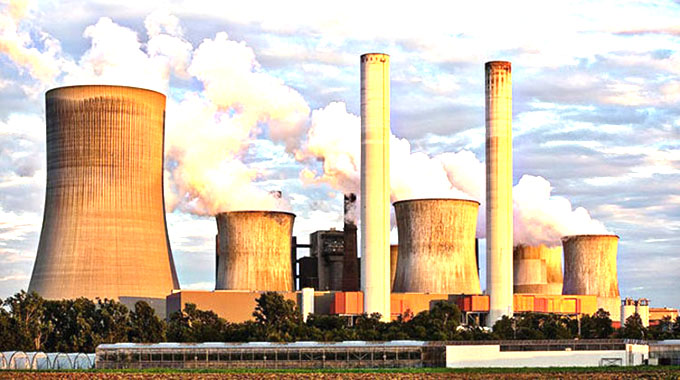Increased investor appetite in power generation

Africa Moyo Deputy News Editor
There is increased investor appetite in taking up electricity investment projects, in a development likely to extinguish power shortages in the future.
With the US$1,5 billion Hwange Thermal Power Station expansion programme underway, which will see an additional 600MW being fed into the grid by 2022, many other projects are at various stages of implementation.
Hwange’s expansion will result in the installed capacity rising to 1 520MW.
The expansion of Hwange follows that of Kariba South Hydro-power Station that was completed and commissioned on March 28 last year by President Mnangagwa.
Two units were added to Kariba South, each with 150MW, taking to the overall installed capacity to 1 050MW, but low water levels have disturbed the production of power.
Government has also announced plans to kick-start solar projects that generate 300MW every year, for the next 10 years.
In September, the Zimbabwe Energy Regulatory Authority (Zera) told The Herald that it had processed 39 solar projects that have capacity to generate up 1 151,87MW.
The projects are expected to require an investment of over US$2,3 billion.
Zera acting chief executive officer Mr Eddington Mazambani said of the approved solar projects, six are already operational while others are at various levels of consummation.
“The Authority has so far received and processed a total of 39 solar energy projects with six of them now functional, two (are) under construction and 31 still to be developed,” said Mr Mazambani.
Three of the projects are at concept or pre-feasibility stage, and have capacity to generate 111MW.
Twenty-two of the solar projects are at feasibility and technical studies level and have capacity to generate 885,1 MW, while three projects, with capacity to generate 70MW, are at feasibility or proof of bankability stage.
Another three projects are at funding stage and can generate up to 53,3MW when concluded, while two projects are at construction stage.
They have capacity to feed 25MW into the national grid when completed.
The six operation solar projects deliver 7,47MW into the grid.
Said Mr Mazambani: “The total investment for all solar energy projects is US$2 327 528 108 being US$9,985 million for projects that are operational and US$2,317 for projects that are still to be developed.”
The interest in investing in solar projects in Zimbabwe comes at a time when rolling power cuts have become the order of the day due to obsolete equipment at thermal power plants and low water levels in Kariba Dam.
Cabinet has since approved the implementation of a large-scale programme to promote the importation, local production of solar equipment and the use of solar power as an alternative energy source.
Special incentives are being provided through duty waivers on imported solar equipment, while it shall be mandatory for all new construction projects to be solar-powered.
A number of companies such as Matshela Energy, Harava Solar and Centragrid (Private) Limited, are working on huge solar projects to alleviate power shortages, which have hit domestic and commercial users hard.
Centragrid, which is based in Nyabira, about 40km from central Harare, has started feeding 2,5MW into the national grid.
The 2,5MW can light up to 1 200 households.
Harava Solar expects to commission its 20MW project in the first quarter of next year.
Initial plans were to commission it this December, but a challenges, principally foreign currency shortages, have affected progress.
Energy and Power Development Minister Advocate Fortune Chasi has indicated that airports across the country will soon be powered by solar to reduce pressure on grid electricity.
Last week, listed group Meikles Limited, unveiled plans to venture into power generation.
It plans to use part of the US$20 million proceeds from the proposed disposal of Meikles Hotel to finance the project.
A United Arab Emirates-based company, Albwardy Investment, recently announced that it was finalising purchase of Meikles Hotel, one of Zimbabwe’s prestigious hotels.
In an unaudited financial statement for the half-year ended 30 September 2019, Meikles executive chairman, Mr John Moxon said the group was well placed to take advantage of opportunities that may arise as it has a reasonable mix of foreign currency denominated earnings to support its strategies.
“Trading during the first two months of the second half of the group’s financial year reflects the same trends witnessed during the first half,” he said.
“The group requires capital to build internal power generation capacity to ensure agricultural export operations run smoothly through having access to power supply at critical times of crop development and processing.
“The proceeds from the proposed disposal of Meikles Hotel will assist the group to promptly construct the power generation plants.”
Experts say once all the power generation projects take-off, load shedding will be a thing of the past.
In fact, Zimbabwe will become a net exporter of electricity, which would be a major departure from present situation where the country is importing from South Africa and Mozambique.
With South Africa having challenges at thermal power stations due to flooding of coal mines, power outages have become the order of the day.
Last Wednesday, the Zimbabwe Power Company was generating 589MW, with all three small thermal station – Harare, Munyati and Bulawayo – not generating anything.
Only Kariba (353MW) and Hwange (236MW) were generating electricity.











Comments